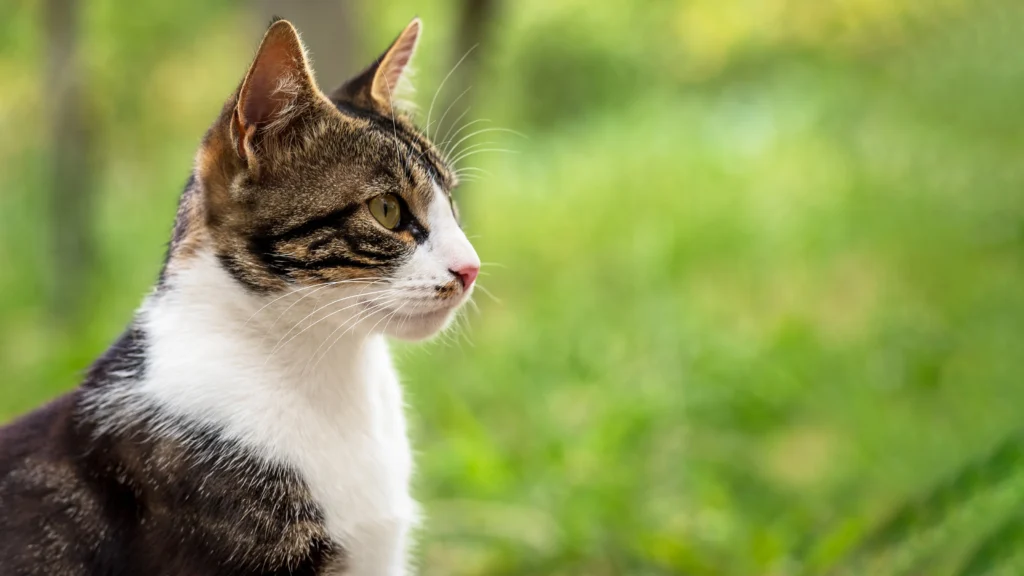Let’s be honest—chubby cats are cute. A round belly, waddling walk, and squishy face might make us smile, but feline obesity is no joke.
What we see as cuddly can be a serious health risk for our furry companions. Just like in humans, excess weight in cats can lead to a range of health issues, including diabetes, arthritis, heart disease, and a shortened lifespan.
But here’s the good news: With the right care, attention, and small daily changes, you can help your cat stay lean, healthy, and full of life. Think of it as a feline-friendly version of Weight Watchers—no calorie counting required (at least not by you!).
The Silent Epidemic: Why Cat Obesity Is a Big Deal
According to veterinary experts, over 50% of cats in the U.S. are overweight or obese. That’s a staggering number. Indoor cats, in particular, are at risk due to lower activity levels and constant access to food.
Excess weight may not seem urgent, but it affects your cat in ways you might not notice at first. Obesity can:
- Put strain on joints and lead to painful arthritis.
- Increase the risk of diabetes and insulin resistance.
- Lead to heart and liver problems.
- Shorten your cat’s lifespan by up to two years.
- Impact grooming ability, causing skin and hygiene issues.
Cats are masters at hiding discomfort, so by the time symptoms appear, the damage might already be done.
Spot the Signs: Is Your Cat Overweight?
Sometimes it’s hard to tell if your cat is a little chunky or truly overweight. A quick body check can help:
- Ribs and spine: Can you feel them easily under a thin layer of fat? You should.
- Waist: When viewed from above, your cat should have a visible waist behind the ribs.
- Abdomen: From the side, the tummy should tuck up slightly—no hanging “belly pouch” (though some pouch is normal for spayed/neutered cats).
If you’re unsure, ask your vet for a Body Condition Score (BCS), a tool veterinarians use to assess a pet’s body fat levels.
Step 1: Talk to Your Vet Before Making Changes
Before putting your cat on a “diet,” consult with your vet. Sudden changes in feeding can be dangerous, especially for overweight cats. Cats require a steady intake of food, and dramatic calorie cuts can lead to hepatic lipidosis, a serious liver condition.
Your vet will help determine:
- An ideal goal weight for your cat.
- A healthy, gradual weight-loss plan.
- The best type and amount of food for their needs.
Step 2: Portion Control – Less is More
Free-feeding (leaving food out all day) is a major culprit in feline weight gain. Most cats will snack out of boredom, not hunger. Instead, switch to measured, scheduled feedings—typically two or three times a day.
Use a digital kitchen scale or measuring cup to ensure accuracy. It’s easy to overestimate when eyeballing portions. Even a few extra kibbles each day can add up over time.
Step 3: Choose the Right Food
Not all cat foods are created equal. Many commercial brands are high in carbohydrates and fillers, which can contribute to weight gain.
Look for:
- High-protein, low-carb foods: Cats are obligate carnivores and need protein to stay lean and healthy.
- Veterinary weight management formulas: These are specially designed to help cats lose weight without feeling hungry.
- Wet food: Generally lower in calories and higher in moisture than dry kibble. It can help with satiety and hydration.
Avoid foods marketed with vague terms like “light” or “natural” without checking the actual ingredients and calorie content.
Step 4: Make Mealtime Fun with Food Puzzles
A bored cat is more likely to overeat. Introducing food-dispensing toys or puzzles forces your cat to “work” for their food, slowing down their eating and providing mental stimulation.
There are dozens of puzzle feeders on the market, or you can make your own using toilet paper rolls, egg cartons, or muffin tins. This simple switch turns mealtime into a rewarding activity that mimics natural hunting behavior.
Step 5: Get Moving – Daily Playtime is Essential
Indoor cats often lack the natural movement outdoor cats get from climbing, hunting, and exploring. That’s why you have to create opportunities for exercise.
Set aside at least 15-20 minutes a day for interactive play. Use feather wands, laser pointers, or toys that encourage chasing, pouncing, and jumping. Try to rotate toys regularly to keep your cat engaged.
If your cat is older or less mobile, start with shorter sessions and build up. Even small bursts of movement are beneficial.
Step 6: Track Progress, Not Perfection
Weight loss in cats should be slow and steady—around 0.5–2% of body weight per week. Too fast, and it can lead to serious health complications. Track progress with regular weigh-ins (either at home with a pet scale or during vet visits) and adjust the plan as needed.
Celebrate small victories like:
- A more defined waistline.
- Increased energy levels.
- Improved grooming habits.
Progress may be slow, but every healthy step adds years to your cat’s life.
Step 7: Treats and Human Food—Keep Them in Check
We all love giving treats, but they can sabotage your efforts. Many treats are high in calories and low in nutrients. Try these alternatives:
- Freeze-dried meat treats in small amounts.
- A few pieces of your cat’s regular kibble set aside as “rewards.”
- Fresh, safe options like cooked chicken (no seasoning).
Avoid feeding cats human snacks like cheese, bread, or processed meats. These foods may be tempting, but they’re not designed for feline nutrition.
It’s a Lifestyle, Not a Crash Diet
Helping your cat lose weight isn’t about perfection—it’s about consistency and care. Like us, cats thrive when they’re at a healthy weight. They move better, play more, and live longer, happier lives.
By making simple changes—smarter feeding, more play, and regular vet check-ins—you’re not just helping your cat slim down. You’re helping them live their best life.
And that’s something to purr about.




